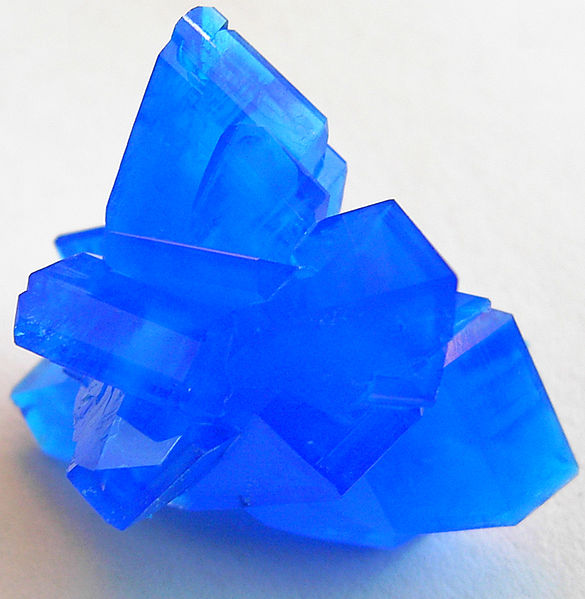Vitriol is the general chemical name encompassing a class of chemical compounds comprising sulfates of certain metals – originally, iron or copper. Those mineral substances were distinguished by their color, such as green vitriol for hydrated iron(II) sulfate and blue vitriol for hydrated copper(II) sulfate.
Image: Blue vitriol monocrystal
Image: Iron(II) sulfate heptahydrate sample
Image: Sulphuric acid 96 percent extra pure
Image: Cobaltsulfat
Copper(II) sulfate is an inorganic compound with the chemical formula CuSO4. It forms hydrates CuSO4·nH2O, where n can range from 1 to 7. The pentahydrate (n = 5), a bright blue crystal, is the most commonly encountered hydrate of copper(II) sulfate, while its anhydrous form is white. Older names for the pentahydrate include blue vitriol, bluestone, vitriol of copper, and Roman vitriol. It exothermically dissolves in water to give the aquo complex [Cu(H2O)6]2+, which has octahedral molecular geometry. The structure of the solid pentahydrate reveals a polymeric structure wherein copper is again octahedral but bound to four water ligands. The Cu(II)(H2O)4 centers are interconnected by sulfate anions to form chains.
Crystals of CuSO4·5H2O
Preparation of copper(II) sulfate by electrolyzing sulfuric acid, using copper electrodes
Lowering a copper etching plate into the copper sulfate solution
Anhydrous CuSO4








